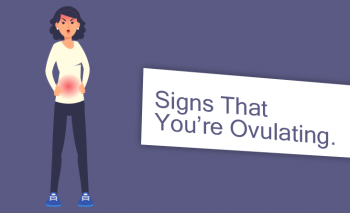Knowing when your ovulation is over is important for those who are trying to conceive. It signals the end of your fertile window and tells you when it’s time to start looking forward to your next cycle. Fortunately, there are a few signs that can help you determine whether or not ovulation has finished.

Monitoring Your Basal Body Temperature (BBT):
Monitoring your BBT is one of the most accurate ways to determine if ovulation has happened or if it’s about to occur. Your temperature typically rises slightly during ovulation and stays raised until your period begins. Once the temperature falls back down, you can assume that ovulation is over.
Changes in Cervical Mucus:
Ovulation causes cervical mucus to become clear, stretchy, and slippery, making it easier for sperm to reach the egg. After ovulation, the amount of mucus decreases and returns to a thicker texture, indicating ovulation has ended.
Signs ovulation is over : Pain or Discomfort:
Some women may experience pain or discomfort around their lower abdomen during or after ovulation as a result of the release of the egg from their follicle. This usually subsides quickly, which could be an indication that ovulation has ended.
Conclusion:
Knowing when your ovulation ends can help you plan ahead for future cycles and improve your chances of conception. While there isn’t one definitive answer that applies to everyone, monitoring your BBT, observing changes in cervical mucus, and paying attention to any pain or discomfort you may feel are all useful indicators that tell you when it’s time to start preparing for your next cycle!


